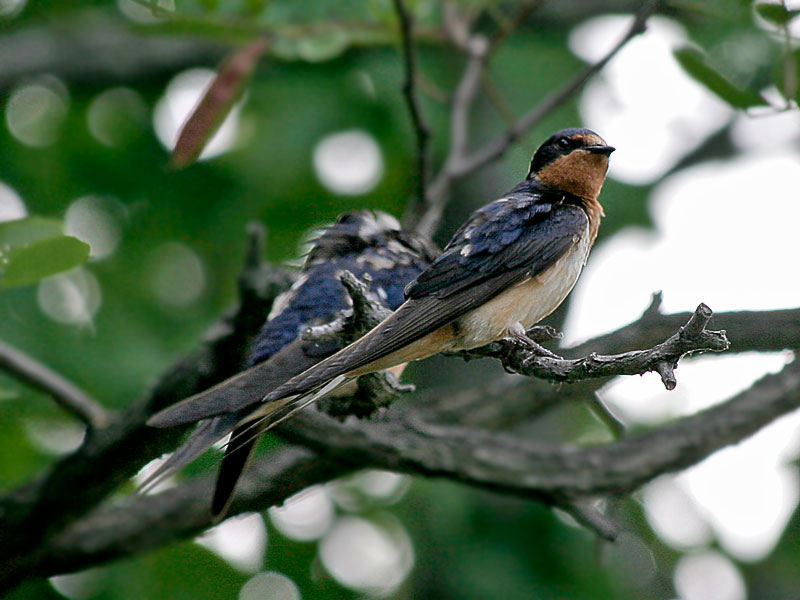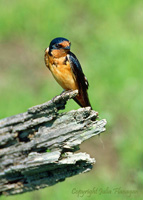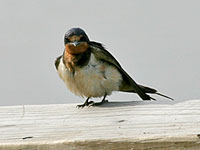
|
Barn Swallow Among the swallows, birds whose swift low-swooping flight in pursuit of insects, sometimes inches from ground, can startle us into awareness of their presence, the Barn Swallow is distinguished by its deeply forked and longer tail. Like some other swallows, this species is bluish-black above and light-colored below, but its underparts are orangish, particularly the throat, and the darker bar on its breast is interrupted/broken in the middle. Barn Swallows live in parks, fields, farms and other grassy areas, near barns, bridges or other old buildings, especially those near water, where they nest, as they do on cliffs away from human settlement. The cup-shaped nests are made of mud, lined inside with feathers and grass, and attached under the eaves or other sheltering edges. The pair remains together for life and often returns to the same nest for several years. Swallows perform a function useful to people (and their domesticated animals) by catching flying insects, including large flies, flying ants and aphids. They may follow farm machinery, grazing animals or humans to catch insects disturbed into flight, and may fly in front of cars for the same reason. They drink by skimming low over the surface of water, and bathe by dipping in as they fly. These birds are found in most of North America, and migrate to South America and the Caribbean for the winter. In the winter grounds they live together in flocks, which may provide more protection from predators such as hawks.
|
Home | Upcoming Events | About Us | Resource Issues | News | Local Contacts Maps | Photos | Publications | Youth Education | FAQ's | Links | Membership |







